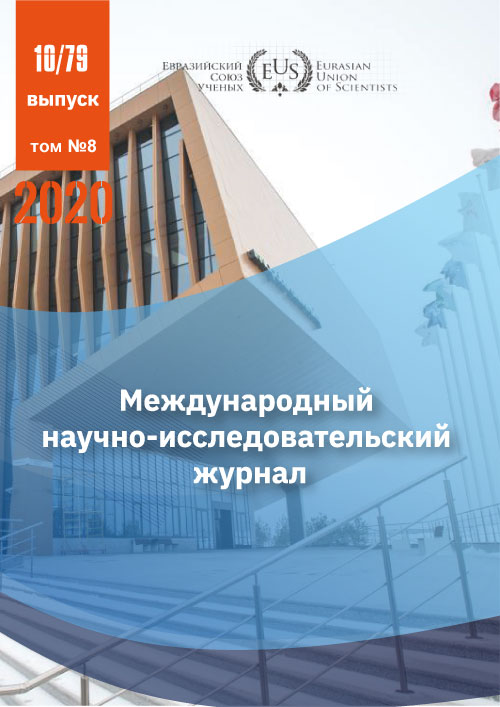DEVELOPMENT OF THE TRANSPORTATION SYSTEM OF INDONESIA
Abstract
Indonesia's transport system was formed largely based on the economic resource base of the archipelago, which consists of more than 17,800 Islands, on which the country is located. The Indonesian Central government's spending on transport has increased significantly in recent years. This allowed the country to expand its transport network and improve access to remote areas of the archipelago.
Maritime navigation provides a link between different parts of the country. On some Islands, where there are no good roads, the main transport connection is via large rivers. The most important direction of the country's transport policy is the development of high-speed cargo and passenger sea connections with the most remote and inaccessible regions of the country, primarily with the Eastern part of Indonesia.
A variety of vehicles are used on the roads of Indonesia. Bus routes are laid in all areas that have access to the road network. Since 2004, the TransJakarta rapid bus system has been operating in the country.
Most of Indonesia's Railways are located in Java and are used for both passenger and freight transport.
In March 2019, the Jakarta metro started operating.
Indonesia's air transport is the most important means of communication between thousands of Islands throughout the archipelago and other countries. Many residents of the country have switched from land and sea transport to faster and more comfortable air transportation.
Indonesia, like other countries, was severely affected by the COVID-19 pandemic in 2020. Further development of transport depends on how quickly the country recovers from the COVID-19 pandemic and how effectively the authorities deal with its consequences.
References
2. CIA World Factbook. Indonesia. https://www.cia.gov/library/publications/the-worldfactbook/geos/id.html
3. Coronavirus. Indonesia. https://www.worldometers.info/coronavirus/country/in donesia/.
4. Indonesia to Build 3,000 Km Toll Roads Until 2024. https://theinsiderstories.com/indonesia-to-build3000-km-toll-roads-until-2024/
5. Jakarta to Bandung High-Speed Rail. https://www.railway-technology.com/projects/jakartato-bandung-high-speed-rail/
6.Jakarta-Bandung high-speed railway project delayed amid pandemic. https://www.thejakartapost.com/news/2020/04/15/jaka rta-bandung-high-speed-railway-project-delayedamid-pandemic.html
7. Length of roads in Indonesia in 2019. https://www.statista.com/statistics/978198/indonesialength-of-streets-by-type/
8. List of airlines of Indonesia. https://en.wikipedia.org/wiki/List_of_airlines_of_Indo nesia
9. List of airports in Indonesia. https://en.wikipedia.org/wiki/List_of_airports_in_Indo nesia
10. MRT Jakarta (North-South Corridor). https://kppip.go.id/en/priority-projects/publictransportation/mrt-jakarta-north-south-corridor/w
11. Passenger forecast estimates 7 billion by 2034. https://airlines.iata.org/agenda/passenger-forecastestimates-7-billion-by-2034
12. Rank Order - Waterways. The World Factbook. Central Intelligence Agency. Retrieved 2 April 2018. https://www.cia.gov/library/publications/the-worldfactbook/rankorder/2093rank.html
13. RI to adopt ITS gradually starting in 2012. https://en.antaranews.com/news/74080/ri-to-adopt-itsgradually-starting-in-2012
14. The World Factbook. CIA. https://www.cia.gov/library/publications/the-worldfactbook/geos/id.html
15.TransJakarta, the oldest BRT system in Southeast Asia is participating to Busworld. https://devirsaati.com/transjakarta-the-oldest-brtsystem-in-southeast-asia-is-participating-to-busworld
16. World Bank. https://data.worldbank.org/indicator/SP.POP.TOTL?lo cations=ID
17. http://www.finmarket.ru/news/5288910
CC BY-ND
A work licensed in this way allows the following:
1. The freedom to use and perform the work: The licensee must be allowed to make any use, private or public, of the work.
2. The freedom to study the work and apply the information: The licensee must be allowed to examine the work and to use the knowledge gained from the work in any way. The license may not, for example, restrict "reverse engineering."
2. The freedom to redistribute copies: Copies may be sold, swapped or given away for free, in the same form as the original.







